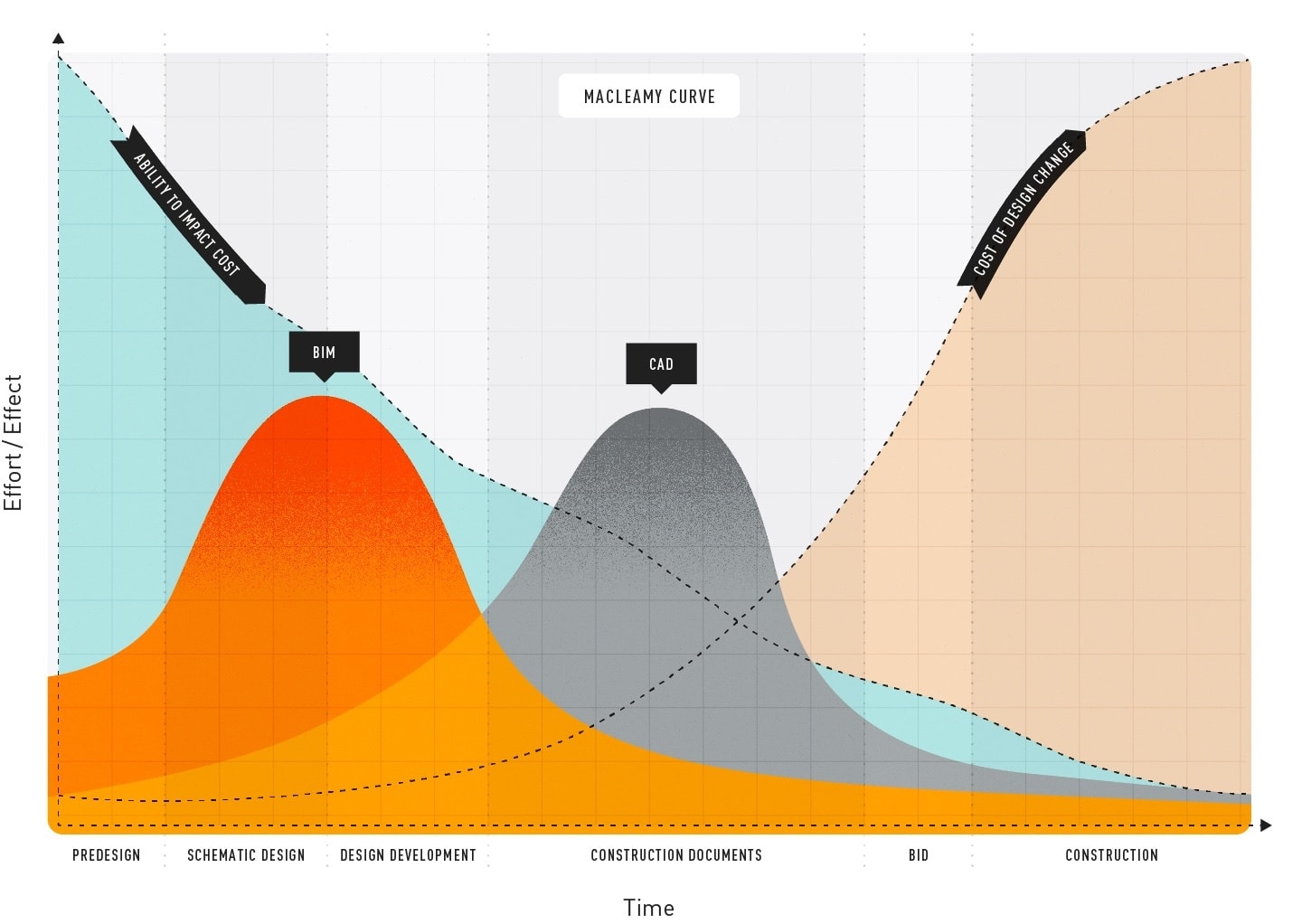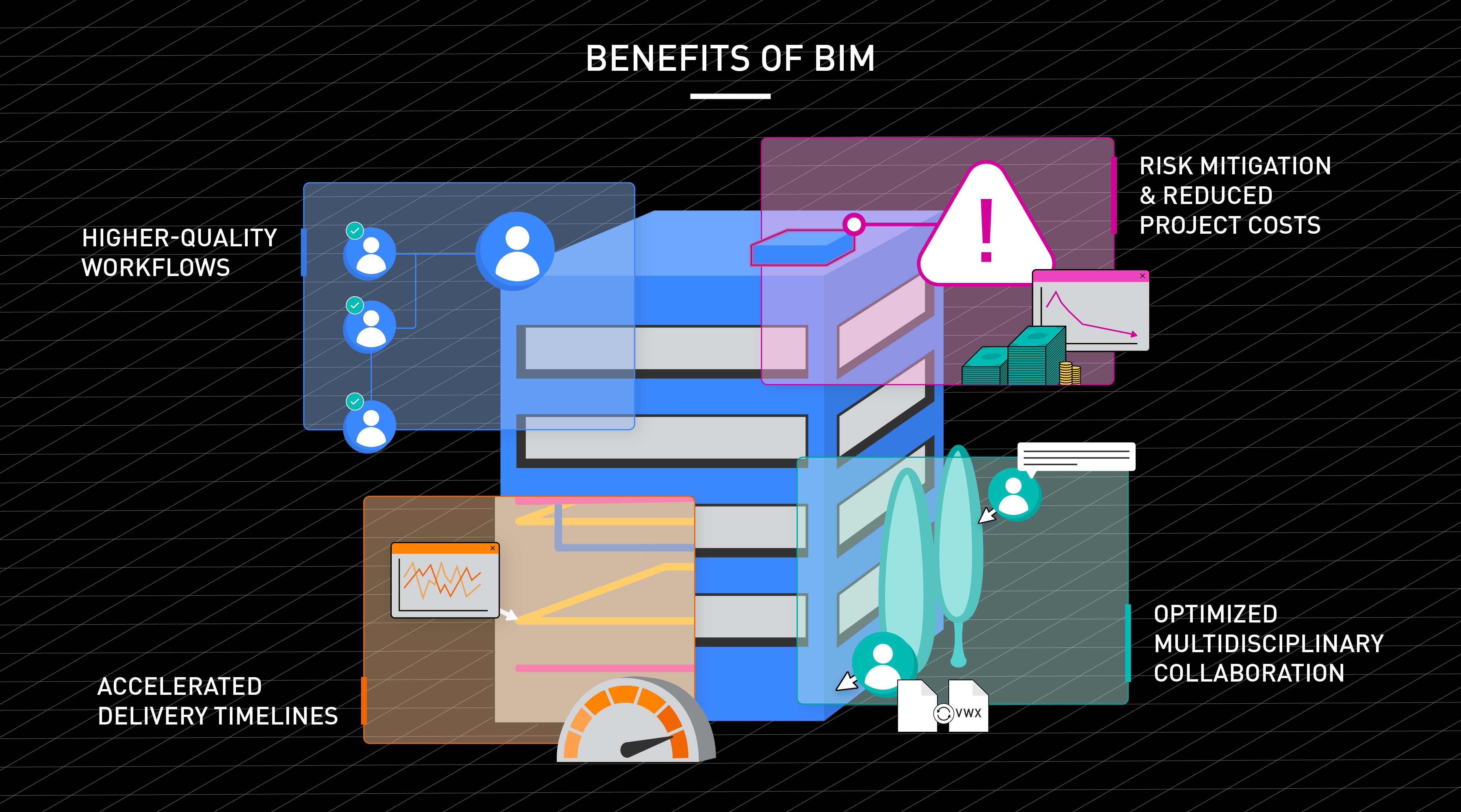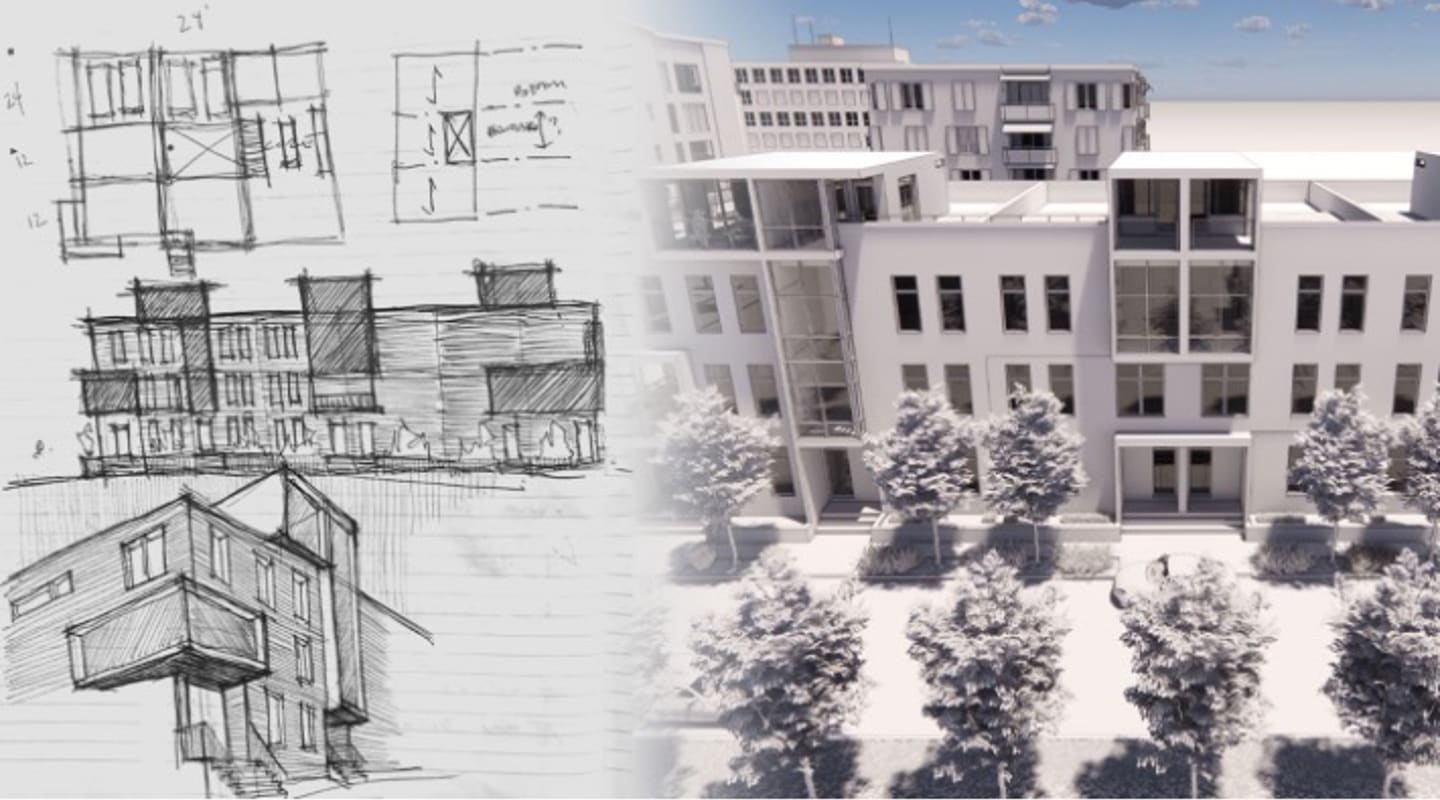For AEC professionals, there are many benefits to implementing BIM workflows.
You’ve probably heard that BIM saves a project time and money, but what exactly does that mean? And are there other ways BIM benefits projects in the AEC industry?
This chapter of our Beginner’s Guide to BIM breaks down several major draws of building information modeling and provides insight into why the workflow continues to grow in popularity. You’ll read about benefits for practitioners and owners alike.
Table of Contents
- Higher-Quality Workflows
- Optimize Multidisciplinary Collaboration
- Reduce Project Costs & Mitigate Risks
- Accelerate Delivery Timelines
HIGHER-QUALITY WORKFLOWS
With BIM, workflows improve in each phase of the project. This concept was fully explored in Chapter 2 of this Beginner’s Guide to BIM.
Higher-quality workflows aren’t beneficial in and of themselves, of course. They’re the means to the end — ultimately, the goal is to deliver higher quality of work to the project owner. Better workflows can contribute to better results.
Increased work quality can make your firm more profitable, too. Demonstrating an ability to produce error-free, accurate models means owners and developers could be more willing to work with you on projects.
With a well-coordinated model, stakeholders — from designers to construction professionals to owners and developers — can have the confidence to make decisions reliably.
OPTIMIZED MULTIDISCIPLINARY COLLABORATION
AEC projects require collaboration between a lot of people to produce buildings that are safe and meaningful.
The traditional approach to designing and constructing buildings relied on different teams using different software programs with no real way to quickly share data between them. Often information being exchanged was shared via 2D drawings, which made coordination between disciplines more difficult, laborious, and error prone.
BIM changes that by providing an integrated process where everyone involved in a project can easily access and share up-to-date information via exchangeable file formats.
In this way, BIM is incredibly helpful for the project team. But it’s also useful for facility operations managers since it allows them to detect potential maintenance issues and even forecast operation goals.
All in all, when there are several stakeholders involved in a project, a BIM process helps bring everyone together and operate from the same up-to-date information.
RISK MITIGATION & REDUCED PROJECT COSTS
The ability to reduce costs and mitigate risks is a big reason why AEC professionals are drawn to BIM. Having a shared model and data environment allows the project to be built digitally well before construction occurs, allowing teams to identify areas of concern and to forecast budget more accurately than would be possible otherwise.
This also means that teams can ensure they’re meeting compliance standards earlier on in the project as opposed to later when making changes is more costly. This concept is illustrated via the MacLeamy Curve, which tells us that as the project timeline progresses, your ability to impact cost decreases. You’re best able to influence budget earlier in the project before decisions are too costly.

ACCELERATED DELIVERY TIMELINES
BIM accelerates projects by providing real-time updates that allow professionals to adapt their methods accordingly to stay ahead of the game. Instead of spending time locating information in a traditional workflow, with BIM, the information can be found directly within the model itself.
It must be said: change is the only constant in a building project. A range of factors can cause details to have to change: a client’s request, site conditions, code changes, and more can all cause necessary revisions in the design process.
By having access to a central model that updates in almost real time as changes are made, it’s natural that the project timeline is reduced. Stakeholders are spending less time locating things, updating them, and communicating changes.

Stay in the know with the latest insights
Subscribers receive news, customer stories, success and learning tips, event information, and other important announcements form Vectorworks.
By submitting this form, you agree that Vectorworks, Inc. and its authorized partners may contact you in regards to news, offers, and the use of our software, services, and platforms. Learn more about our privacy practices and your data on our privacy page.*
